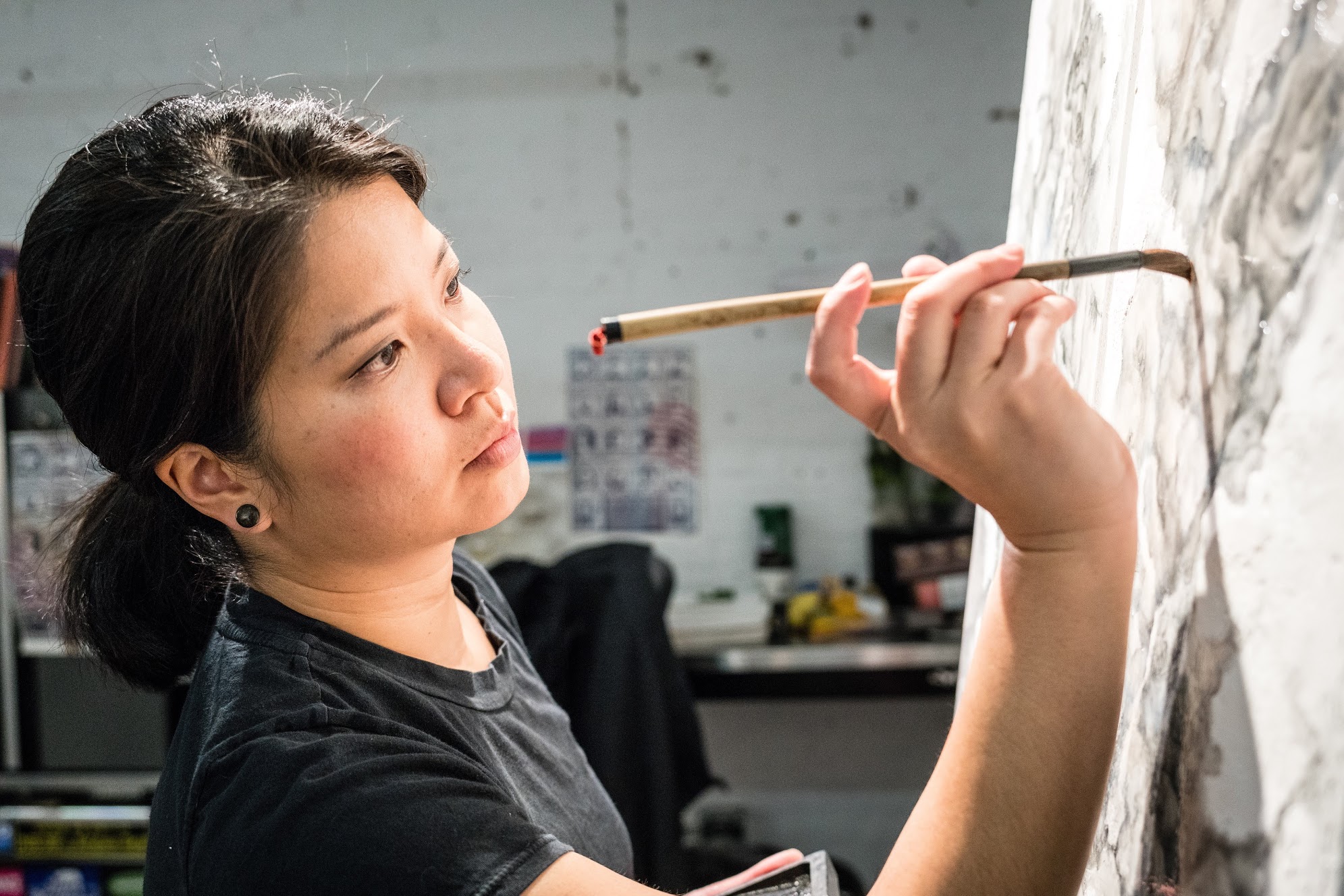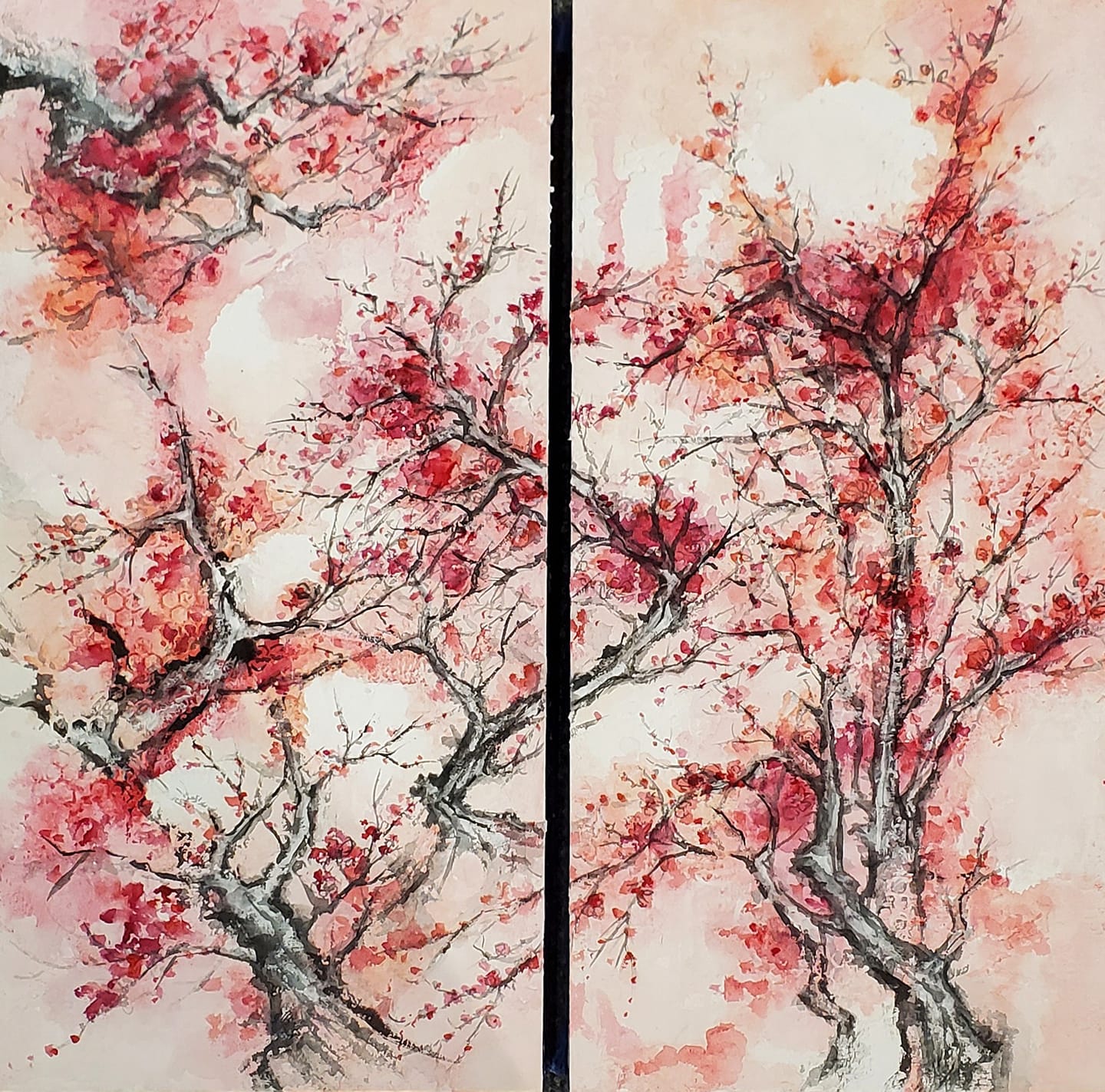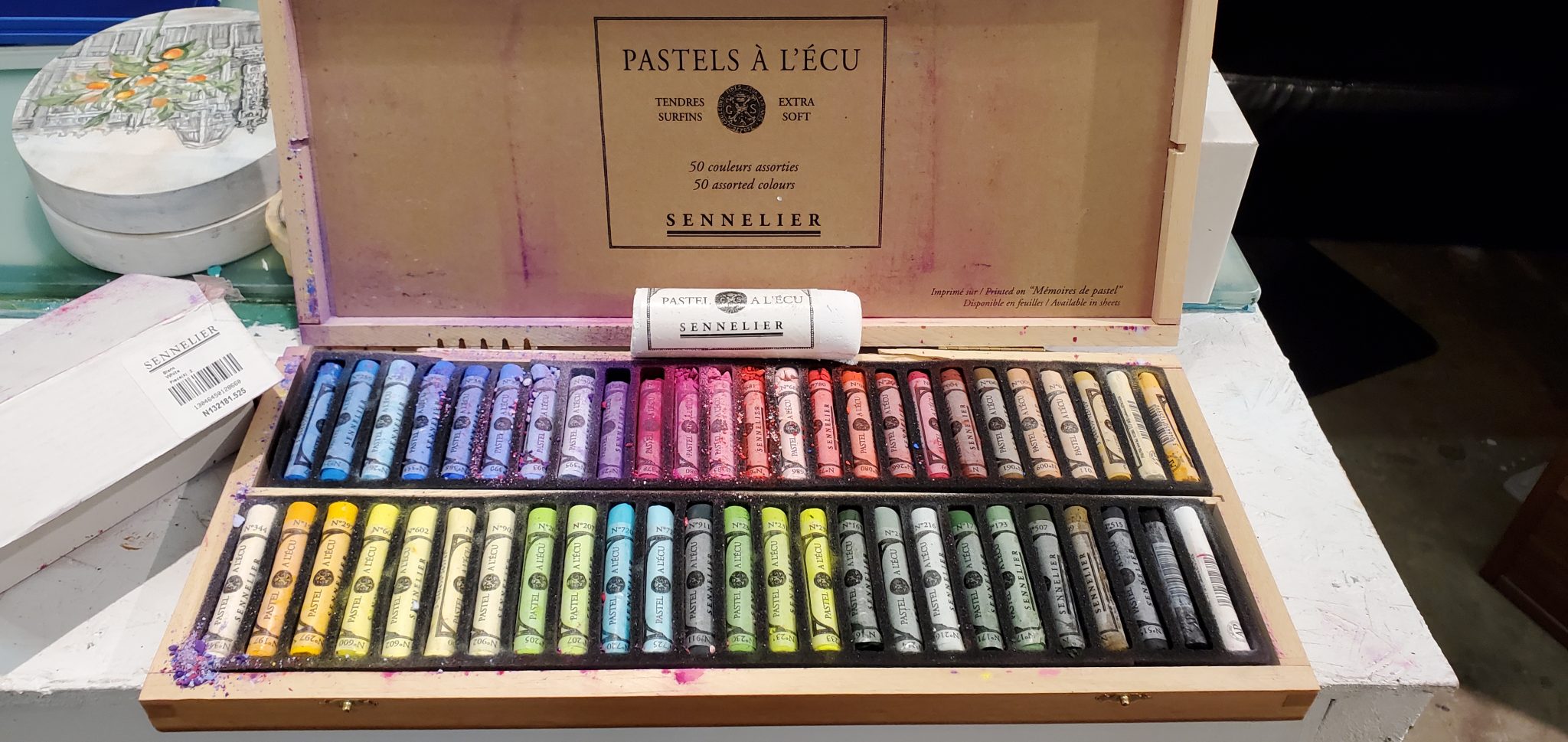Ideas And Inclusivity – Cindy Shih
October 7, 2021Ideas And Inclusivity – Cindy Shih
Challenging the status quo, one brushstroke at a time

Cindy Shih is a first generation Taiwanese American whose contemplative work explores issues of gender, race and power. Drawing heavily from her early training in Chinese calligraphy, she employs brush painting, Italian fresco and landscape techniques, often using nature as a metaphor.
We are delighted to have caught up with Cindy to discuss her art, techniques (which include an innovative use of Sennelier pastels), and how her creative lifestyle is inspiring and empowering people to strive for a more equal society.

How did art come into your life and what is your relationship with it?
As with most artists, I’d say art has always been a part of my life, even when I didn’t want it to be. I just tried to avoid making money from it for as long as possible. At a certain point, it became worse to not do art than to try and make money from it. Even now, I struggle with assigning monetary value to my work, but that is secondary to creating it.
Has being a first generation immigrant influenced your art and your process? Has it influenced the materials you use?
Definitely. My parents have always emphasized the importance of understanding my cultural roots; and given that my Dad was a calligrapher, I grew up learning how to use sumi ink and brushes. I have also always been drawn to materials as a form of expression, so using traditional materials in non-traditional ways became a big part of my narrative. Also, who doesn’t love playing with materials?!
What traditional techniques are still present in some shape or form in your art today?
Traditional Chinese landscape brush painting is still present in my work today, as well as symbolism and using nature as metaphor in my compositions.
We’ve heard you use pastels in a unique way. Can you please tell us a bit about your methods and the results they achieve?
For sure! Since pastels are mostly pure pigment (particularly great ones like Sennelier soft pastels), I typically grind up the pastels with a pestle and use the ground up pastels as a watercolor on wet or dry Venetian plaster. I keep the pastels in small makeup tins and apply it with just water and a brush, so that the pigments will seep into cracks in the plaster and create textures within the landscape.
My work explores historically relevant techniques (such as Roman frescoes) as it relates to Chinese landscape painting – specifically in the Song dynasty – so I incorporate sumi ink with pigment in a non-traditional way to highlight the fact that the cross-cultural sharing of ideas and artistic expression has always been and continues to be. Despite current nativist tendencies in our political climate, my art continues to be a celebration of the sharing of ideas between cultures, old and new.

Could you tell us about an artist who inspires you and your art practice – someone you saw yourself in or who you wanted to be like? What was it that inspired you or drew you to their art?
I came across Zhang DaQian’s paintings a while back, and loved the looseness and modern take on traditional landscape painting using vibrant and bold colors. His work inspired me to become more expressive.
I have also always looked up to Hung Liu as an artist, who sadly passed away a few weeks ago. Her traditional take on modern subjects, as well as her sense of empathy, humor, and gravitas as a person has always inspired me as an artist. Her passing is a huge loss for the art community in the Bay Area and she will really be missed.
What does D.E.I. stand for and why is it important to talk about it? What ethical responsibilities do we have as artists so this movement doesn’t lose momentum?
Diversity, Equity, and Inclusion covers what I think is the holy grail that we as purveyors of culture should aspire to understand and push forward.
It is important that we as artists, and particularly artists of color, understand how the art world has historically limited or pigeonholed artists of color who do work using our own cultural narratives as “folksy” or “craftsy” while simultaneously rewarding non-POC artists for appropriating the same narratives.
It is a crucial time for us to evaluate, recognize and change the systems that have kept POC artists out of spaces of power and a part of the cultural dialogue.
As such, we should look at the spaces we occupy where we can make decisions and do what we can to open doors for others.
Do you think the way you live as an artist (i.e. your creative lifestyle) can have a positive impact on your community and the wider world?
Definitely. So many people (even strangers from across the country!) have approached me personally, to tell me how much my decision to leave my corporate job to become an artist has inspired them, or how much my outspokenness around identity or politics has encouraged them to find their own voice in their work and in their communities. I have always seen art as just another mode of communication, which reaches people on a deeper and more intimate level – and is something we need now, more than ever.
I also feel a certain responsibility as an artist, to the community that I am a part of. I often donate pieces to auctions and non-profit fundraisers, and raise money for political campaigns. Last year, I was able to curate a fundraiser with a few other like-minded artists to donate over $10,000 for a worthy cause. We should never underestimate the power artists have in influencing and inspiring others in the community.
What advice would you give to young BIPOC people, artists or not, that you wish you had heard?
Your voice matters, and your story needs to be heard. Also, you are an artist, as long as you keep doing art. It doesn’t matter if you sell or show your work – just keep making art.

As an artist who has headlined solo exhibitions, what advice would you have for others who are finding it challenging getting their work shown in galleries?
Galleries are just one avenue for getting your work seen. You are living in the best time in history to find alternative ways to get your work shown. Be creative, and don’t underestimate your own power.
We’d like to thank Cindy for taking the time to participate. At Opus, we are committed to diversity, equity and inclusion in both our business and wider community. It’s a continuous process and these conversations are vital.
Everyone thrives in an environment where our inherent worth is recognised. Let’s make sure we all feel valued, connected and safe to express our authentic selves, and never forget we belong to something bigger.
See more of Cindy Shih’s work at cindyshihart.com or @cindyshihart
